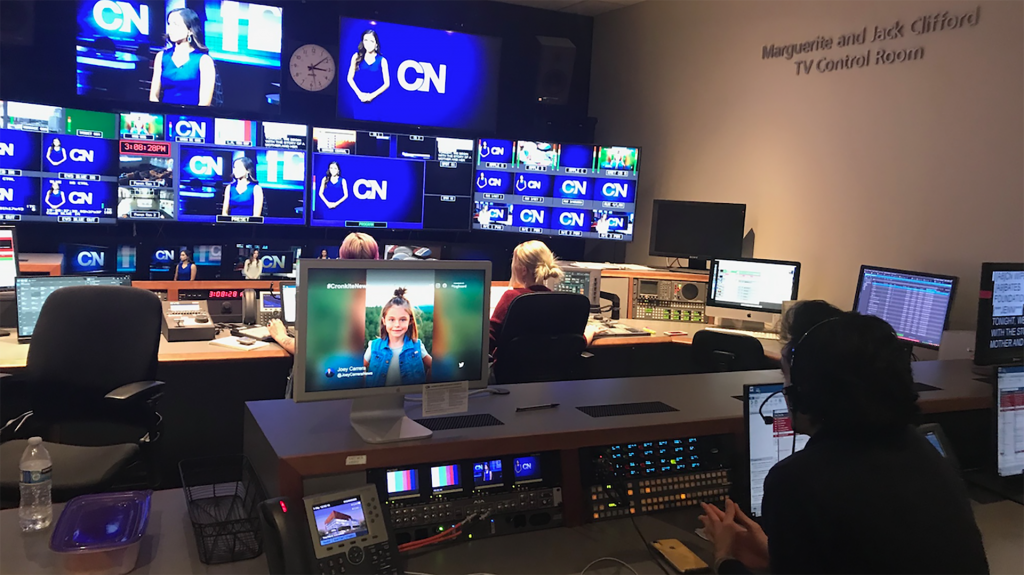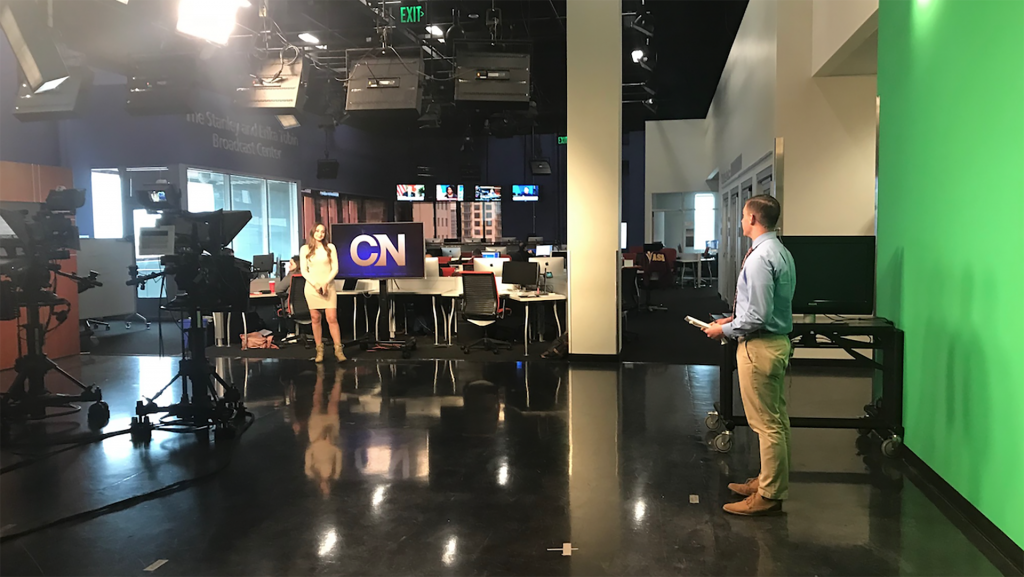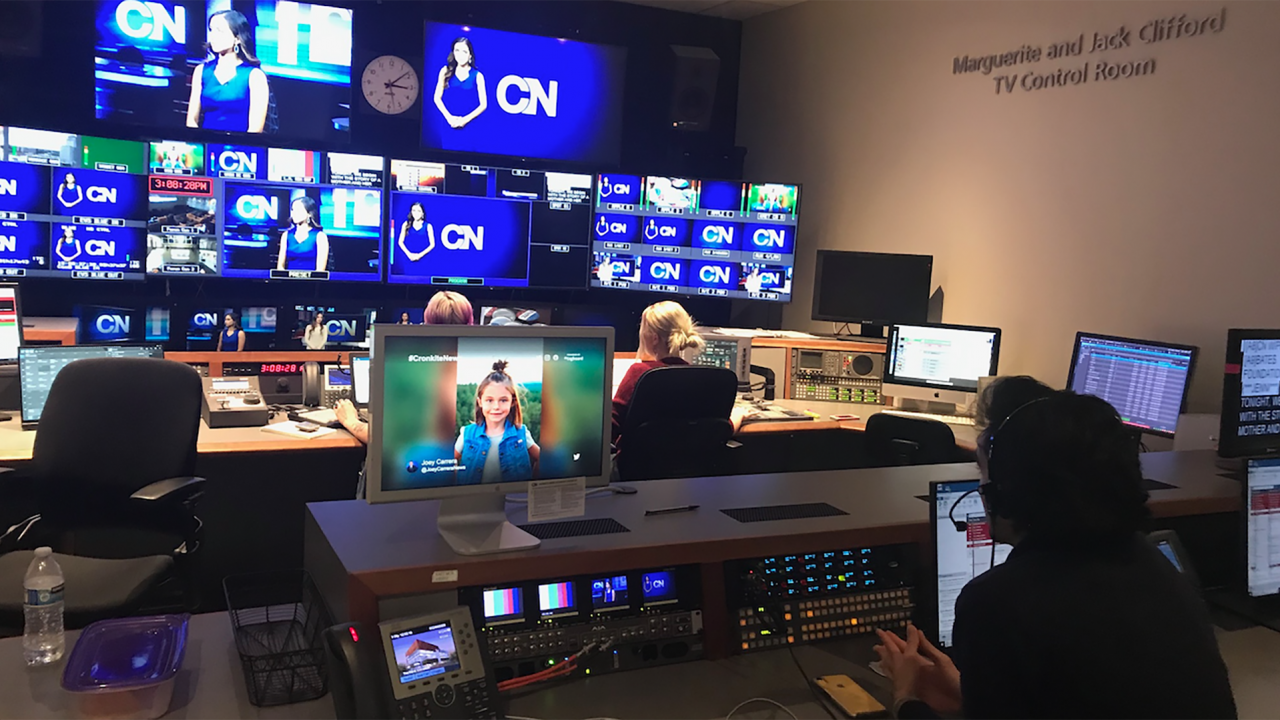At some point between ages three and four, my son discovered the word “why.” Delighted by the power of this novel interrogatory, he unleashed a torrent of “why’s.” He had the stamina of a marathon runner, and I struggled to keep pace. When he finally outgrew this phase, I breathed a fatherly sigh of relief. Now, focused on newsroom innovation, I’ve had a change of heart. Rather than accepting how things are, and how we do them, we adults might be better served to emulate that youthful curiosity and ask “why” more often.
Why are newscasts 30 minutes long? Why does the flagship evening newscast start at 5 p.m. and not at another time? Why do we have people who ‘anchor’ the newscast? Do the reasons for these institutional practices still apply? There are many unwritten rules in a newsroom. But how many of them are truly ‘rules’ and how many are just ‘how we’ve always done it’?
Part of the mission of the Knight-Cronkite News Lab is to question traditional practices through testing. So, in December, students and faculty at Cronkite News teamed up to reimagine the traditional 5 p.m. show. We decided to do a newscast, but without anchors.
There are a host of reasons, if you’ll pardon the pun, for exploring alternatives. Some are very practical. Every news director has struggled with anchor staffing, whether it’s scheduling over the holidays, when folks are sick, on weekends, or just in general in smaller markets.
There are also business realities. Newsrooms continue to be challenged to find ways to reduce the costs of creating their content, and anchor value measured in salary has been trending downward as TV ratings have eroded.
“The trend in the markets I am familiar with has been (salary) reductions of approximately 25% from 2008,” according to John Misner. “Some more; some less.” Misner, now a Professor of Practice at the ASU Cronkite School of Journalism, has served in broadcast management roles in Atlanta, Fresno and Minneapolis-St. Paul. Most recently he was President and General Manager of the NBC-TV affiliate in Phoenix, Arizona from 2002 to 2016.
Misner notes that, in today’s digitally disrupted news ecosystem, the value of anchors is relative to the strength of a station’s community brand and the degree to which it offers differentiated content. “Given that most stations are still producing commodity content, the anchor is one way to differentiate a newscast (and the station’s overall brand) from competitors,” says Misner. The bottom-line question: In 2019, is your anchor still a strong reason to watch?
These are good reactive reasons to experiment with the traditional newscast structure. But there’s also a big proactive reason: As linear viewing shifts from live to on-demand, consumers will increasingly choose when they watch, what they watch and how/where they watch. In that future media landscape (that is already here for some), the key “unit” of news may well be the story, rather than the show.
That’s what led us to produce a special “Storytellers” edition of our 5 p.m. Cronkite News. The outcome was a newscast without anchors. Our method? Put the focus on our stories, and our storytellers. Here’s how we did it.
WHAT ANCHORS DO
It might seem obvious. But when was the last time we thought about what is it, specifically, that anchors do to add value to a newscast? To create a newscast without them, we had to answer that question first. The answers gave us our “problems to be solved.” The list of valuable contributions included things like being a trusted and recognizable source, a reason to watch (affinity), an extra editor to review and fact-check news content, someone skilled at presentation, and the glue that connects unrelated news reports into a show flow. From our inventory, we saw that anchors contribute to shows in three broad ways – some journalistic, some practical, and some performance-related.
STORYTELLERS EDITION: HOW WE DID IT
Producers and studio production crew at Cronkite collaborated on strategies for how to reimagine the practical anchor functions, like “how do we open the show without anchors?” and “how do we get from one story to the next?” Since our focus was on our storytellers, our solution for how to open the show was to feature the storytellers themselves, previewing their stories. Problem solved!

For transitions between stories, we wound up challenging the notion that the TV doctrine of weaving unconnected stories, so traditional as the producer-written, anchor-delivered transition, was not necessary to viewers. If the stories are related, the reporters can make those connections. For our stories that were not connected, we decided less was more: We used our standard animated stinger (with the audio ‘swoosh’ for audience cueing) as a simple, low-lift way to advance from story to story. We built one additional “map” graphic that we could use as an alternate transition for reporters who recorded look-live intros and tags from a remote location related to their story.
One unintended yet arguably positive effect of our anchorless format was that it eliminated the entire category of very short, often “voiceover” and “over the shoulder” stories because there was no one to deliver them. Instead, our show consisted of eight robust reporter packages, each produced to be self-contained, with intro and tag by the reporter. We didn’t mind dispensing with those disposable VO’s, but we did want to be sure we could get some key news-of-the-day updates. Our solution was to place one reporter in the newsroom, who did a “happening now” reader of three short need-to-know local news items. This is as close as we came to any role in the show resembling an anchor.

Other transitions were handled without fanfare. For breaks, reporters did their own deep teases of upcoming stories. Our weather forecaster delivered that report standalone. When it came time to figure out how to end the show, our production team had a rather hilarious conversation about how to end a newscast without “anchor banter.” What followed may or may not have included comments about how often anchor banter is cringe-worthy. Ultimately, we followed a guiding rule to prioritize simplicity for the ending, as with other parts of the broadcast. We simply had the last of our reporters tag out of the final story by thanking viewers for watching our special “storytellers” edition of Cronkite News, and then voicing over a full screen push to our website.
RESULTS AND REFLECTIONS
The immediate takeaway from our storytellers newscast was how smoothly it went. “That was easier to produce than a normal newscast,” observed Christy Bricks, the director in charge of our student show producers, and an eight-time regional Emmy-winning producer herself.
The second big takeaway was about the feel and flow of the newscast. If we could somehow forget that newscasts have always had anchors, and simply experienced this storytellers’ version, it seemed completely natural to have the storytellers present their stories. The question that hung in the air afterwards was: What if no one even noticed?
In our debrief, a crucial part of experimentation to capture lessons while fresh, the team identified a few highlights: We liked the show open featuring the storytellers teasing their stories; the show seemed to flow smoothly, despite the absence of traditional anchor bridges; our simple animated effect (with sound, which helped) seemed to be a more than sufficient transition from story to story; we liked the use of a reporter in the newsroom as a means of incorporating “happening now” headlines. Frankly, eliminating VO’s and readers and instead having an entire show of enterprise stories felt more substantive than a typical newscast: more depth, less filler. Overall, the biggest win was that the producers and studio production team felt that our lean producing style made the format highly flexible and repeatable, whether for hiatus or holiday shows, or even potentially as a way to create a show built around a series of reports on a single theme or topic.
Along with what worked, we always try to capture what we’d change, improve or try next. It was an experiment so we did not create “Storyteller” branding or a special graphics package, and we didn’t market the show in advance. Having figured out how to do the format, we’d add those elements next time. Although we created a map background for field reports, in practice our student reporters ran out of time to shoot field look-live intro’s and tags; we’d definitely add that to visually enrich a second effort at this format. Finally, we realized that without anchor chat, banter and VO’s, there’s little flexibility in timing an anchorless newscast; so we talked about leveraging the “happening now” headlines block as the adjustable section to aid producers in show timing.
Importantly, we also looked at our available metrics. Our on-air ratings were within the range of normal but fully 20% below our daily average. We also stream our newscasts on Facebook Live, which gives us access to engagement metrics as well as anecdotal feedback via comments. As with Nielsen ratings, our audience size is small, so it’s hazardous to overinterpret small numbers. However, as with our ratings, both our watch time and our audience engagement (likes, comments and shares) were 20-30% lower than our typical newscast. Notwithstanding the production successes noted above, these metrics indicated that, at least for our traditional audience, the absence of anchors mattered. These findings also reinforced our debrief that, to earn the audience for this format innovation, we’d need to better market and showcase its viewer benefit.
We did not set out to eliminate anchors. We wanted to test our assumptions about what a newscast must be. In the process, we discovered that some of what seems essential in a traditional newscast format…isn’t. We also got some quantitative measures that reinforced that our traditional audiences do value the roles of the anchors. That’s a useful learning. Overall, we now have another option for how to program that ever-present 30-minute news hole. It’s a format that gives news stations another option for solving staffing or budget challenges. Time for the next “why?” question!
